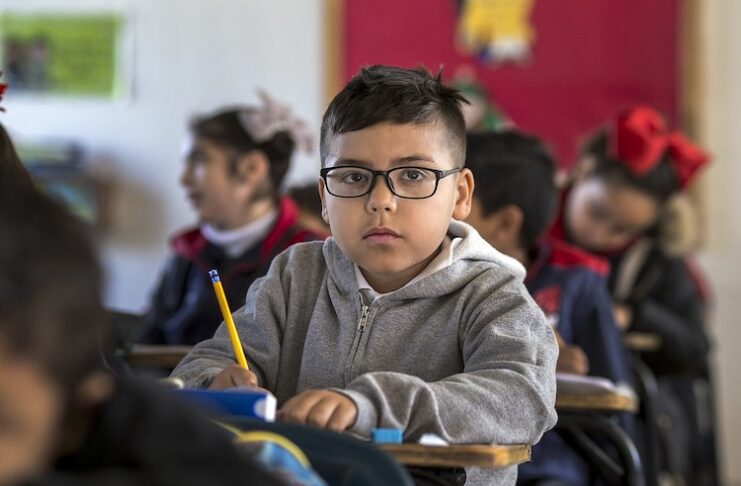Slower careers, much thicker, almost bullet-proof glass-ceilings, lower incomes and more significant discrimination are the scenario that opens up for women in the world of employment.
Firstly, the low presence of women in the labour market is a sad Italian peculiarity. The gap between female and male employment rates in our country continues to be among the highest in Europe.
The female employment gap
The female employment rate in Italy stands at 47.7% (-1.8% compared to a year ago), compared to a male rate of 65.3% and a national rate of 56.5% (ISTAT, February 2021). The unemployment rate remains higher among women (11.1%) than among men (9.6%). There is also a clear gap in the inactivity rate (46.3% among women, 27.6% among men). Compared to February 2020, the female inactivity rate has increased by 1.9%.
A comparison with ten years ago shows that women’s integration into the labour market is growing very slowly. From 2011 to 2021, the female activity rate rose from 52.4% to 53.7%, the employment rate from 46.7% to 47.7%.
As is always the case in times of crisis, those most affected by the Covid 19 health emergency impact are women. ISTAT certifies that after the first ten months of the pandemic, 444,000 jobs were lost, 312,000 by women and 132,000 by men. It is mainly because women workers are more often in a weak position, with less stable contracts, part-time, in sectors that do not allow remote work.
The average number of hours worked per week is 38 for men and 32 for women.
Lower wages for female workers
According to the Global Gender Gap Report 2020, Italy is only 76th in the world rankings on equal pay (it lost 6 positions compared to 2019). The average monthly income of women in Italy is 18% lower than that of men; the gap rises to 30% in couples with children (Eige, European Institute for Gender Equality).
Moreover, women receive 37% less in pensions (Istat) due to a path whereby they work less and are paid fewer hours.
This disparity is all the more absurd considering that women have a higher average level of education and better educational achievements (the gap is 12.2% in their favour, 26.5% have a lower level of employment than their level of education).
Women and work: inequalities persist
While much is written and spoken about the gender of nouns – director or headmistress, minister or ministeress, mayor or mayoress –, far less is done to remedy disparities such as that illustrated by the figures relating to the national labour market and the lack of adequate and effective tools for reconciling domestic and non-domestic commitments. All too often, these shortcomings translate into Italian women giving up or being forced out of the world of employment. The preferential choice of sectors that allow the reconciliation of work and family, especially in terms of working hours (school, clerical activities, personal services, part-time, etc.) and the cultural resistance that identifies some professions as ‘male’ or ‘female’ penalise women, even though they are better educated, in terms of career and pay. 11.1 % of Italian women have never worked in order to have the opportunity to take care of their families (Oxfam 2020, “The value of care”).
The family burden
The fragility of women’s position in the world of employment lies, in part, in a family culture that is not yet able to distribute tasks fairly, with repercussions on career opportunities.
According to data produced by the European Commission in 2020, the number of hours per week devoted to non-work activities is very uneven: men devote 5 hours per week to home care and 11 hours per week to children, while women, in comparison, spend 13 hours per week on home care, more than twice as much as men, and 17 hours per week on children. The domestic burden within the couple is clearly unbalanced, affecting performance and career prospects. With this in mind, the European Union has adopted the work-life balance directive, introducing paternity leave and a series of facilities to adapt the rules to a family organisation that, especially in the younger generations, tends to be more flexible and equitable. These European initiatives, it is important to remember, should, in any case, coincide with structures capable of supporting motherhood outside the home, such as company crèches for employees.
The difficulty of reconciling work and family life
Since the beginning of the health emergency, half of women workers have worked remotely, a quarter continuously or for an extended period (24.8%, compared to 20.7% of men), another quarter occasionally (25.2%). 21.2% would like to continue working in this way even after the end of the pandemic (compared to 16.9% of men), another 50.2% alternating between working from home and being present, confirming the vital need for greater flexibility to facilitate family and home management. 59.4% of women claim to have managed their family and domestic commitments better than remote working (Italy 2021 Report).
Moreover, 15% of women have accepted to work without a professional contract in the last year, and 12.7% have worked in more than one job simultaneously – data that denounce the difficulties of Italian women workers.
Another reason for professional fragility is to be found in the type of profession: women are mainly employed in low-paid jobs, such as education and care, while the better-paid sectors, such as science, engineering and technology, are occupied by men for 80%. And let us remember that sectoral segregation is the number one factor in the gender pay gap. This is why it is crucial to introduce other paradigms at the professional level today to break down the gender gap of tomorrow.
Gender stereotypes still claim victims
Career choices are also influenced by gender stereotypes, which continue to claim victims by, for example, indulging in the prejudice that science is a ‘boy thing’: a commonplace that must be combated among girls and young women so that it does not influence their future choices. The gender stereotype originates in the early years of schooling and is reinforced by high school or university choice, where only 16.5% of young girls aged between 25 and 34 graduate with a degree in science and technology, compared with more than double the percentage for boys. This long obstacle course is undoubtedly reflected in the world of employment, wherein scientific areas (hence the best paid ones) young women account for 41% of PhDs, 43% of academic researchers, and only 20% of full professors; among Italian rectors, only 7% are women. It is a disparity that, if tackled today with the right cultural and legislative tools, can gradually be reduced by an increasing number of women entering strategic and high-profile job sectors, such as, for example, the scientific-technological ones: more solid and higher paid, according to the demands of the labour market.
Eurispes surveys
The surveys produced by Eurispes have clearly shown over time that society is ahead of institutions and politics. With a few exceptions, the family organisation appears to be quite ready to facilitate family and work reconciliation for women. All too often, lacking are supportive policies and consistent mobilisation of the world of labour in this sense. Although Italian men are increasingly accustomed to sharing with women the burden of domestic work and, even more so, taking care of their children, women continue to bear a heavier burden, making sacrifices to make up for the country’s structural shortcomings. In the early 2000s, Eurispes described them as ‘acrobats’, constantly balancing work and family care. It is mainly women who work part-time, take leave, and reduce career paths already penalised by lower salaries and fewer career opportunities.
The Eurispes data (Italy 2021 Report) show that 71.8% of women believe that even today in our Country, there is a disparity between men and women at work (economic recognition, career opportunities, etc.), 64.5% in the division of domestic duties, 64.3% in the recognition of their role in society. Overall, 68,7% of the interviewees believe that in the current Italian society, women are discriminated (for 18,5% very much).
Educational stereotypes can tip the scales of tomorrow’s society
The female imagination must be enriched with figures who contribute, through their daily work, to narrowing the gap that has always divided the history of men from the history of women, who represent the historically more resistant minority.
Gender supremacy still exists in the stereotypes perpetuated in educational and working environments, in the gender pay gap, or simply in a society that is unable to offer a different narrative of the present than the one historically made by men.
And yet, there is much evidence to show that the presence of women in the labour market guarantees excellent results. Companies with at least 15% women on their boards produce 15.3% higher profits. The presence of women in workgroups has positive effects on the performance of companies: it creates a serene company climate, boosts business, introduces soft skills such as communication and empathy. It brings creativity and lateral thinking.
McKinsey analysts have calculated that gender equality is worth 26% of the world’s GDP, which in practice means 12 trillion dollars more wealth by 2025. In short, equality strengthens growth and promotes the economic stability of Countries.
*Raffaella Saso, Deputy Director of Eurispes.
Leggi anche





















